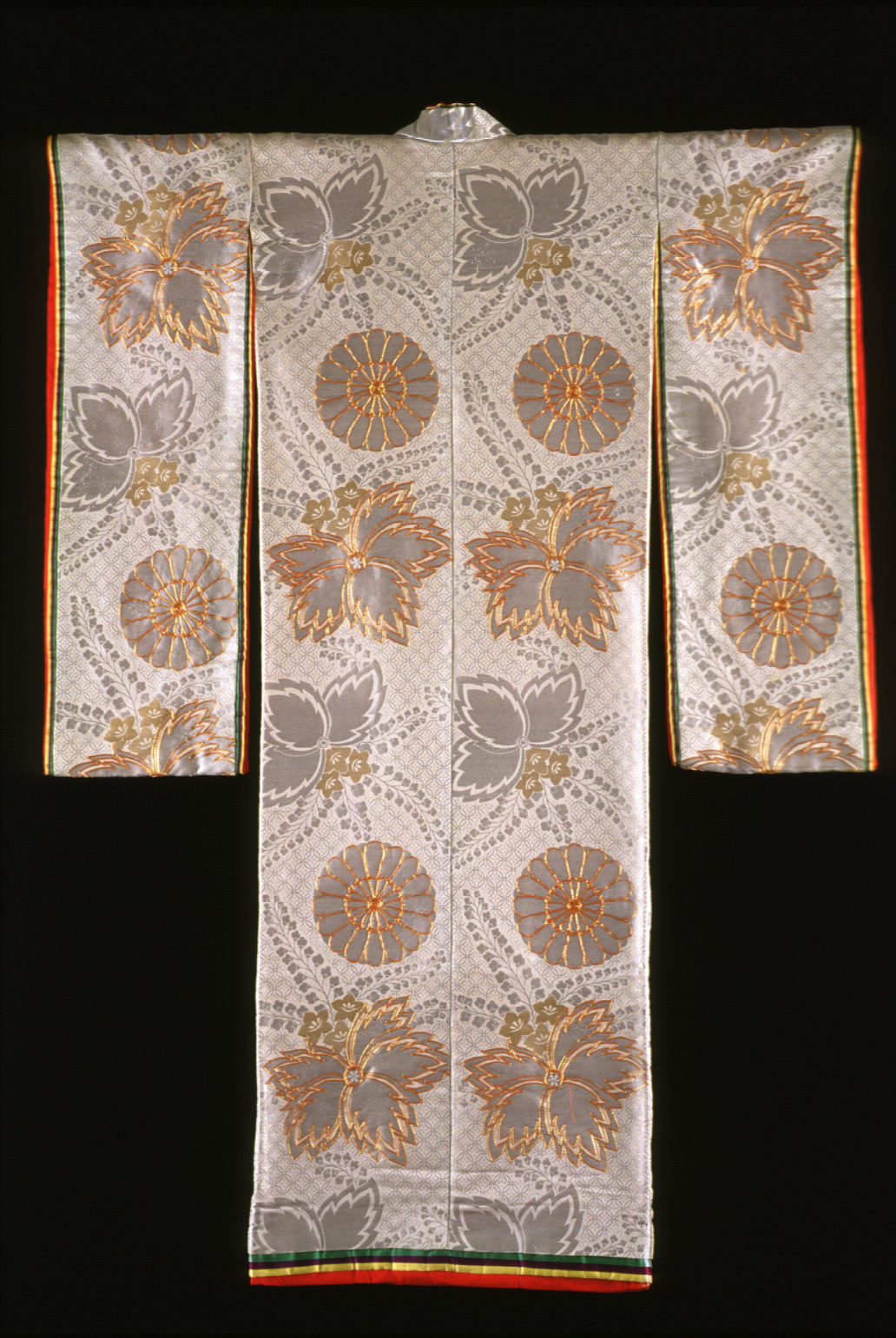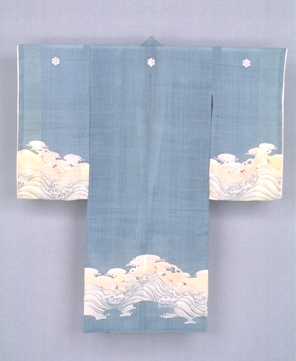SAM Art: Shining, shimmering gold
Gold has been a shimmering presence in art across cultures and time. When the first metals were unearthed by humans around 5000 b.c., gold was valued for its rarity and lustrous color. Ancient Egyptians believed that gold was the skin of the gods, and for Greeks, gold was a mixture of water and sunlight. Gold is mentioned in the Bible as one of the gifts from the Magi to an infant Jesus. The Peruvian Incas referred to gold as “tears of the Sun.” In China, gold was the color of emperors and today is a symbol of good luck. In Japan, gold was associated with the ruling class and represented the color of the heavens.
A new group of textiles, including in this Japanese brocade kimono, has been installed in Going for Gold this week. This focused show, drawn from the museum’s collections, looks at gold’s use and significance across cultures.

